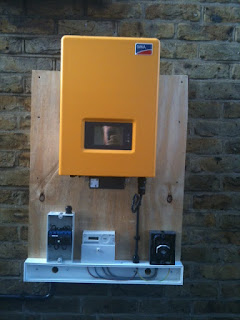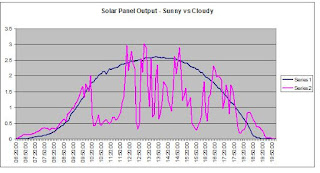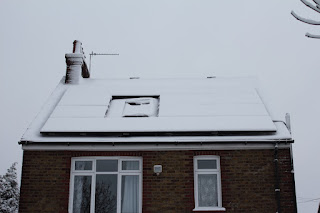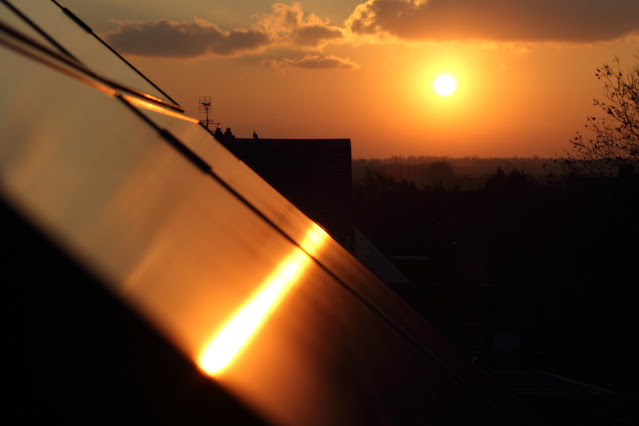Replacing Gas Meter from ft3 to m3
Although not directly related to our solar panels this may be of interest as it relates to energy use. We recently had our old Imperial gas meter reading in cubic feet replaced with a new Metric gas meter reading in m3 (cubic meters) by Southern Gas Networks. All well and good until we came to read the new Metric gas meter and got a complete shock!
 |
| Imperial gas meter reading in cubic feet cf |
The original imperial gas meter as shown in the photo above was reading in Cubic Feet. The new meter below is reading in cubic meters. Conversion from cubic meters to cubic feet is done by multiplying the cubic meter number by 35. So 1 cubic meter is 35 cubic feet.
 |
| Photo of Metric gas meter, reading in cubic meters |
Using basic maths, three foot is approximately one meter so one cubic foot will be a lot less than one cubic meter. So again with basic maths you would assume that the new metric gas meter reading in cubic meters would increment a lot more slowly than an imperial gas meter and the reading would be a lot lower. Wrong!
After 24 hours we checked the new metric gas meter and found it was showing a reading of 5m3. At first glance something was seriously wrong - our usage hadn't changed yet the new meter was reading 5m3 when the old meter was reading around 10 cubic feet for a whole month! At this rate we would be looking at 150 cubic meters of gas for a month and a massive gas bill!
Something had to be wrong so I did some investigation on Google and rechecked the meter again.
The solution was actually very simple. Despite the old imperial meter reading in cubic feet the actual scale is hundreds of cubic feet - the decimal places are showing each cubic foot of gas not tenths of a cf. So every main digit that the imperial gas meter increments is actually 100 cubic feet of gas.
Over the course of a month with the imperial meter we were using 1000 cubic feet of gas which ties up nicely with the readings on the new meter.
The moral of the story is that if you have an imperial gas meter that is replaced with a metric one then remember that the old imperial meter reads in hundred cubic feet.




















